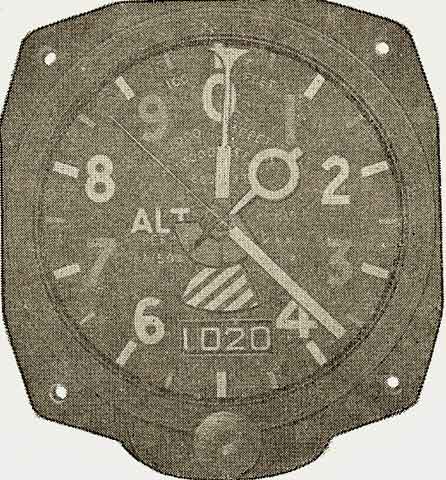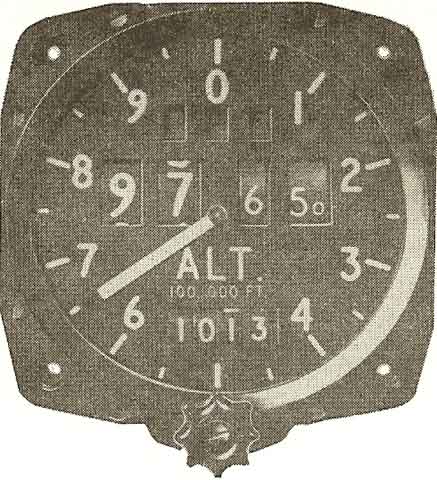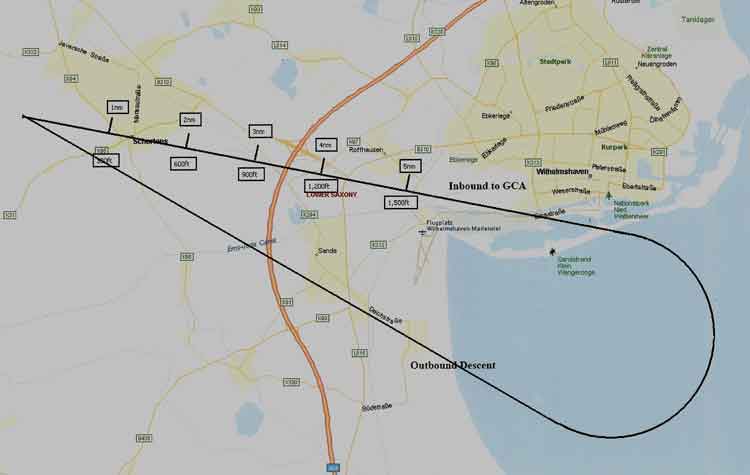
Just occasionally one is presented with an ideal opportunity to demonstrate the danger of doing something wrong. The example I remember most vividly was an instrument rating test to re-rate
Jeff Jeffrey just before I left Jever in 1957. I am sure
Jeff will not mind being named - not just because he has told others of the experience since but also because the altimeters in those days could easily be misread and most of us had done so at one time or another. Indeed because they were the cause of some fatal accidents the altimeters were changed. All this is explained by
Mick Ryan below.

The instrument rating test consisted of various flying patters which needed to be flown within prescribed limits, recovery from unusual positions and ended with a procedural descent from 20,000 feet leading into a radar controlled approach to the airfield. The flight simulated cloud flying with the person being tested wearing a hood which prevented him from seeing outside the cockpit.

Recovering from unusual positions was far from straightforward as the artificial horizon in those days would have toppled and recovery had to be made using primary instruments only.
Jeff recovered satisfactorily from a rather testing unusual position but had not realised how much height he had lost in doing so. He called base for a letdown procedure saying he was at 20,000 feet when in fact he was at 10,000 feet. The weather was good, there was no one else about so I let him carry on. He descended outbound and began the inbound turn at what he thought was 12000 feet but was in fact 2000 feet. By the time he had rolled out onto the 290 inbound heading we were still descending and not far above the waves of the Jade Basin. As a "I learned about flying from that" example it could not have worked out better. I left it as long as I dared and at the last moment called "I have control - look up" which
Jeff did to see the windscreen literally filled with the Wilhelmshaven lighthouse.


This is an example of the earlier type of altimeter in RAF aircraft. The long white needle indicates the height within a 1,000 foot band. The picture shows a height of about 380ft. However this must be read in conjunction with the next shortest needle which has a circle at the end. This indicates the height within a 10,000 ft band and in the picture it shows between 1,000 and 2,000 feet, i.e. 1,380 feet. Finally the top narrowest needle with a triangle head shows the location within a 100,000 foot band, i.e. in this case in the lower part of the 0 to 10,000 foot band. So all read together it indicates a height of 1,380 feet. The problem comes when pilots concentrate on the first two needles and fail to notice which 10,000 foot band is being indicated by the last needle. Such a mistake can be fatal if a pilot lets down through 0 feet, i.e. the ground, believing it to be 10,000 feet.


This is a later Mk.22 Altimeter where an attempt is made to avoid this misunderstanding. The height within a 1,000 foot band is still shown by a single white needle, in this case 650 feet. The movement of the needle is helpful when levelling off at a height and to quickly monitor movement relative to a given height. However the need to further interpolate two more needles is removed by showing in a 4 display window, the full height. In this case it is showing 97,650 feet. The small window at the bottom of the dial in both cases indicates the pressure setting that is read to the pilot and which he sets by turning the knob at the bottom of the dial. Forgetting or mis-setting that is another good way of flying into the ground, but that is another story.

In the case of the Vampire T.11 in those days I am sure it had the first type of altimeter. In this incident the person under test did not notice that the long thin needle was below the 1 mark, indicating below 10,000feet. Having started his unusual positions recovery test well above 10,000 feet he automatically assumed that he was still above 10,000 feet.


The let down pattern for runway 29 at Jever is shown in the diagram above. Aircraft were expected to let down from approximately overhead the airfield at about 20,000 feet and descend on a heading of about 130°. At about 8 nm from the airfield an inbound turn was commenced with the aim of rolling out on 290° and settling down with flaps and undercarriage down at 1,500 feet. During this time the aircraft was handed over to the final talk-down controller for a
GCA approach. Descent commenced at 5 nm at a rate of 300 feet per mile.

The pilot under test was letting down outbound from what he thought was 20,000 feet when in fact it was from 10,000 feet. On the turn inbound at what the pilot thought was just above 10,000 feet, he was in fact just above the waters of the Jade Basin. Sir John was obviously amused by this, and as both safety pilot and examiner, he was not under the hood like the person being tested. As they homed in towards the airfield over the Jade Basin, still descending,
Sir John finally took control and told the other pilot to look out. The windscreen was full of Wilhelmshaven lighthouse.